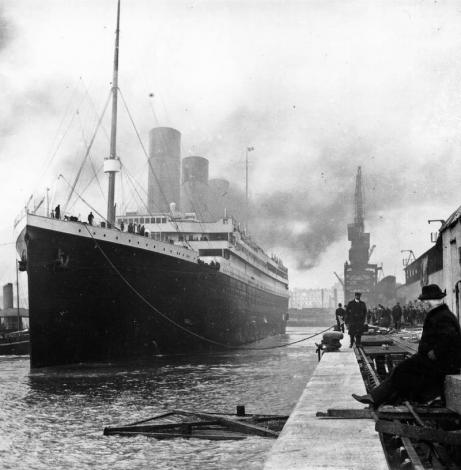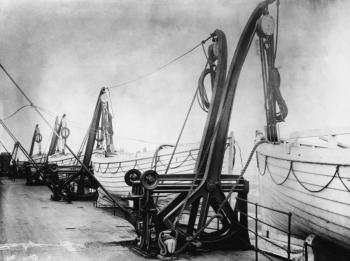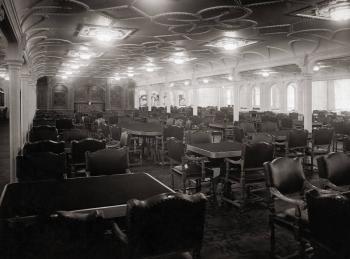
In 1912, the only way to cross the Atlantic Ocean was by ship. The trip took almost six days to complete. More people were traveling at this time and each new ocean liner was the fastest, the biggest, or the best ship to ever be built.
The RMS Titanic was no different. She was the largest ship ever built at the time of her construction. In addition to her size, she had the best amenities. Amenities are features and benefits which included fancy restaurants and cafes, two libraries, a gym, and even a swimming pool! Despite all of these wonderful amenities, the Titanic set sail with 20 lifeboats with a combined capacity to carry 1,187 people in the event of an emergency. However, the Titanic was certified to carry 3,547 passengers and her builders said she was “designed to be unsinkable”. On April 10, 1912, the ship set sail from Southampton, England carrying 2,200 people including passengers and crew – nearly double the capacity of the lifeboats – due to arrive in New York City on April 17, 1912.
On April 14, 1912 at 11:40pm, crewman Frederick Fleet rang the alarm bell three times when he spotted an iceberg directly in the Titanic’s path. The crew tried to turn the ship to avoid the iceberg but it was too late. Under the water, the iceberg ripped through the starboard (right) side of the ship. Right away, six of sixteen of the watertight compartments started to flood. The maximum number of compartments that could fill and still allow the Titanic to float was four. The unsinkable ship was sinking!
Many passengers insisted on staying aboard the ship because they did not believe that the damage was that bad. After all, they were told that the Titanic was unsinkable! The Titanic’s crew sent emergency messages, called SOS messages, to surrounding ships. The Californian was nearby but the radio was off. The RMS Carpathia heard the call at 12:35am but she was 58 miles away with a top speed of 20 miles per hour. The Carpathia answered the call but did not arrive to the site until 4:00am.
Meanwhile, at 2:18am, the stern (back) of the Titanic rose up so that the ship was almost on her end sticking straight up in the water. Within two minutes, the ship and all of her still onboard passengers slid into the water.
706 people made it into lifeboats and were saved by the crew of the Carpathia. 1,500 people died at sea. The sinking was front-page news around the world and led to changes to many safety rules including ships had to have enough lifeboats for all passengers and that radios had to be on at all times. Public fascination with the Titanic and her tragic story continues today.


- One suite on the Titanic cost $4500 for a one-way ticket. That is the equivalent of $121,627.19 today!
- The Titanic was 882 feet long and 92 feet wide, with eight decks. The ship had four giant smokestacks and a massive rudder. She had three huge propellers. The Titanic had three gigantic engines and they were driven by steam produced in 29 large boilers. The boilers were powered by 159 coal-burning furnaces and the crew shoveled more than 600 tons of coal into the furnaces each day. 600 tons!
- There were 324 first-class passengers, 284 second-class passengers, and 709 third-class passengers. There were more than 900 crew members aboard the fated ocean liner.
- Lifeboats were reserved for women and children first. 72% of women aboard the Titanic survived, while 50% of children, and 16% of men survived. 63% of the ships passengers and crew perished in the tragedy.
The Sinking of the Titanic by Matt Doeden, illustrated by Charles Barnett III and Phil Miller (Graphic Novel)
Titanic by Robin Johnson
I Survived the Sinking of the Titanic, 1912 by Lauren Tarshis, art by Haus Studio (Graphic Novel)
The Titanic Mission by Dan Gutman (historical fiction)
A Night to Remember by Walter Lord

